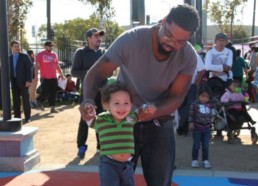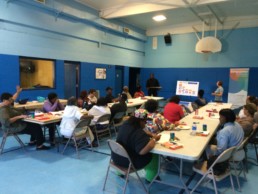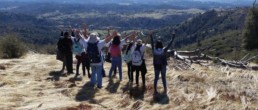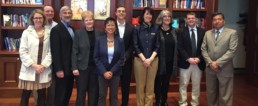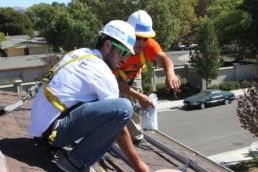Funders Help Bring Windfall For More Urban Parks in Los Angeles
When the Los Angeles City Council voted to change how it collects fees from developers for parks for the first time in 30 years on September 7, it was a huge victory for urban parks advocates – with funders playing a critical behind-the-scenes role in the “Parks for All” campaign.
Los Angeles has had a chronic shortfall of funding to create urban parks, especially in low-income communities, for decades. Though the state’s 1975 Quimby Act authorizes cities and counties to pass ordinances requiring that developers set aside land or pay fees in lieu of a set-aside for parks or recreational facilities, Los Angeles’ ordinances were written in a way that constrained Quimby’s potential to bring parks to where they are needed the most. An excellent editorial by the LA Times details these limitations. And the statistics are sobering: 41 percent of lower-income households in Los Angeles do not have immediate access to a park (versus 2 percent in New York). Los Angeles is ranked 65 out of 100 of the nation’s largest cities in terms of how well the city is meeting the need for parks.
Several funders who are part of the Los Angeles’ Funders Collaborative, an initiative of Smart Growth California, were frustrated by the situation – especially since parks are such an essential piece of creating healthy, equitable, and sustainable communities. A member of the Los Angeles Funders’ Collaborative steering committee, The Rosalinde and Arthur Gilbert Foundation, stepped up to bring together four funders who wanted to collaborate in moving the needle on Quimby reform.
This evolved into an effort that showcases what funders working together do so well and the critical role they can play. Funders supported research that produced evidence supporting the Quimby reforms, ensured that the LA Department of City Planning convened diverse organizations to talk about potential solutions, and facilitated connections between advocates who hadn’t historically worked together. Together, these supportive efforts added key momentum to Quimby reform.
It is ultimately the incredible work of the 68 “Parks for All” coalition partners – including the Los Angeles Neighborhood Land Trust, NRDC (Natural Resources Defense Council), Community Health Councils, Prevention Institute, TRUST South LA and Pacoima Beautiful – who brought the changes to the Los Angeles’ Quimby Act ordinances to life through a multi-year campaign. These changes mean that funding for creating parks should double from around $20 million per year to nearly $50 million, and ensure that moving forward, new development pays for new parks.
The impact this will have on the livability of Los Angeles cannot be underestimated, especially for low-income communities and communities of color. Many thanks to everyone who was part of the Parks for All campaign and to the funders who took philanthropic leadership to exciting new places.
Are you a funder who wants to create healthy, equitable, and sustainable communities in Los Angeles County? Learn more about the Los Angeles Funders’ Collaborative.
Many thanks to the Los Angeles Neighborhood Land Trust for sharing the photos included with this blog.
Partners for Places Grants Put Equity at the Heart of Sustainability Efforts
Over the past five years, the Partners for Places grant program has invested more than $4 million in sustainability and climate action projects in cities and regions across the United States and Canada. That’s a significant boost for sustainability work, and dozens of new partnerships between local government sustainability leaders and place-based funders. Yet, we know that the challenges our communities face are daunting: planet-wide greenhouse gas pollution, environmental toxins that prevent babies and children from fully meeting their potential, especially problematic in our most disadvantaged communities, crumbling urban water and transportation infrastructure, and a dearth of green and healthy places for relaxation, play and spiritual recharge. Given these realities, community partnerships are more important than ever.
Today, the Funders’ Network for Smart Growth and Livable Communities and Urban Sustainability Directors Network are pleased to announce that eight cities will receive a total of $515,000 in grant awards through the Partners for Places general grant program, which helps forge these kinds of local partnerships. When combined at least 1:1 with local matching dollars, that’s over $1 million in our last grant round to support impactful, locally-driven, sustainability projects across the United States.
They span the country from the Pacific Northwest to South Florida. The one thing they have in common, though, is that they put equity at the center of their efforts, helping to ensure that all residents benefit, regardless of their race or economic status.
Two projects will help two older, industrial cities – Detroit and Hartford, Connecticut, on the path to opening sustainability offices, so they can embrace sustainability and equitable development as a bridge to a brighter future.
In Seattle and Portland, leaders are working to ensure that the environmental progress they have achieved is felt equally across their cities. Partners for Places grants will fund impressive projects to support energy planning in Portland’s Cully neighborhood and environmental justice projects in Seattle that put decision-making and leadership firmly in the hands of residents from neighborhoods of color. Both projects build on important earlier efforts funded by the Partners for Places: equity-led climate action planning in Portland and Multnomah County, and the development of an Equity and Environment Agenda for the City of Seattle, made possible with the strong support of the mayor, city council and with investments from a collection of local funding partners, all members of the Funders’ Network.
Providing benefits to neighborhoods of color and lower-income communities is at the heart of Partners for Places projects that will take place in Chattanooga, Minneapolis and Tucson. Chattanooga will expand a successful energy efficiency program for low-income households, while both Minneapolis and Tucson will work to increase access to healthy, local foods and to support the local food economy using a variety of strategies – expanded farmers markets, buy-local campaigns, and culturally appropriate strategies for boosting home based food business and local markets.
In Miami-Dade County, support will provide greening and critical shade at bus stops along public transit routes in two tree-deprived, low-income neighborhoods, where bus riders often have to battle extreme heat conditions while waiting for the bus. The project expands upon the earlier, successful Partners for Places-funded SHADE project, which provided for community-designed tree planting projects along a canal trail and in community open spaces in two of the county’s poorer neighborhoods.
All these projects are made possible by six investor foundations: Bloomberg Philanthropies, The JPB Foundation, The Kendeda Fund, The New York Community Trust, Summit Foundation, and Surdna Foundation, and local matching funders.
On behalf of the Partners for Places Selection Committee, I want to congratulate all of our grantees from this fall grant round. We are excited about the potential that they offer to advance sustainability and climate work in their local communities, but also for the lessons that they will have for colleagues in other cities and regions. I know that I will be on the look-out for opportunities to gather the local matching funders for these projects – a combination of family, place-based and community foundations – with other Funders’ Network members – both virtually and in person – to hear more about your experiences working with local government to support locally-designed and led projects. (Brief Advertisement: this will happen in a breakout session at TFN’s annual conference in St. Paul, Minn.) And, I look forward to seeing how local Partners for Places projects can both lift up how central equity is to sustainability efforts, and increasingly provide an adoption accelerator for innovations developed through the USDN network. Yup, it’s a lot, but given this ever stronger field of practice, and funder excitement in the possibilities, the sky is the limit.
Our fall 2016 general grant program recipients are the cities of:
• Chattanooga, Tenn. ($40,000): To expand a successful program that helps low-income neighborhoods – which use 43 percent more energy per square foot during the winter than the city’s average home – increase their energy efficiency. Residents will be encouraged to create their own locally-based solutions. (Matching funder: Benwood Foundation & Lyndhurst Foundation)
• Detroit ($25,000): To create an action plan that helps the city scale sustainable approaches across all initiatives – from transit oriented development to building demolition, energy efficiency in older buildings, vacant land reuse, green jobs and more. These design approaches can save money and resources while better positioning the city for the future. (Matching funder: The Fred A. and Barbara M. Erb Family Foundation)
• Hartford, Conn. ($125,000): To create a sustainability director position for the city and a climate action plan that comprehensively addresses energy, land use, transportation, waste and water usage. The plan will look at the root cause of climate change, including ways to improve air quality and reduce flooding, to improve the health and well-being of all residents. (Matching funder: Hartford Foundation for Public Giving)
• Miami-Dade County, Fla. ($50,000): To provide critical shade along public transit routes in two tree-deprived neighborhoods, so that the low-income residents can comfortably walk to – and wait for – the bus. This effort expands the successful Partners for Places-funded SHADE project and makes riding the bus a more viable option, by creating a humane, comfortable and safe waiting experience for the bus rider. (Matching funder: Health Foundation of South Florida)
• Minneapolis ($75,000): To strengthen the local food system by helping Minneapolis’ 35 farmers markets work together, collect metrics on their impact and conduct a joint “Minneapolis Buy Local” marketing campaign. In addition, the program will expand an innovative program at the West Broadway Farmers Market’s that incentivizes low-income residents to purchase healthy foods by having doctors give patients food prescriptions. (Matching funder: Greater Twin Cities United Way)
• Portland, Ore. ($50,000): To help this city ensure that its successful efforts to reduce greenhouse gas emissions directly benefit low-income neighborhoods by supporting a resident-led Community Energy Plan in the Cully neighborhood. Portland has seen impressive results from its carbon-reduction efforts – in 2014 per person emissions were 40 percent below 1990 levels – and seeks to support historically underserved communities in implementing low-carbon investments and solutions. (Matching funder: Meyer Memorial Trust)
• Seattle ($75,000): To implement the city’s Equity & Environmental Agenda, a roadmap to ensure that people of color, immigrants, refugees and those with low-income and limited English proficiency both lead and benefit from the city’s environmental progress. Unveiled in April, the agenda provides goals and strategies so that the city, funders, environmental organizations and the private sector can work together with the community for change. Funding will support community participation in a new Environmental Justice Committee and support pilot projects with communities of color that demonstrate environmental justice in action. (Matching funders: The Bullitt Foundation, The Russell Family Foundation and the Seattle Foundation)
• Tucson, Ariz. ($74,862): To help the mostly Latino residents of the La Doce neighborhood strengthen their food-based economy by having citizen folklorists trained in ethnographic research assess local needs. The study will look at the informal economy and what home-based food businesses exist, how they and local supermarkets are faring, and what these businesses need to thrive. As UNESCO named Tucson a City of Gastronomy last year, honoring its rich food culture, the city wants to enhance the local food economy in neighborhoods. (Matching funder: Community Foundation for Southern Arizona)
Investing in Water Resilience: Confluence Philanthropy, EGA, CGBD, and TFN organize first-ever Western Water Briefing
“We forget that the water cycle and the life cycle are one.” - Jacques Cousteau.
Whether our world is prepared or not – climate change has come to remind us. Drought or flooding, rising sea levels or crumbling infrastructure, shifting migration patterns and socio-political unrest, the impacts of climate change are plainly visible in our most important natural resource: water. The importance of water management and scarcity will only become clearer as the effects of climate change become increasingly visible and disruptive in our everyday lives. Businesses have already been forced to respond, as witnessed by the massive protests against Nestlé’s water bottling plants, and the complete departure of Intel’s semiconductor fabrication plants from California. With the state’s agricultural sector now using over 80% of California’s water, its clear that our strategies for managing these limited water resources must adapt – and quickly.
If there’s a sliver lining, it’s that persistent drought conditions across the Western United States have drawn new attention to how we manage and allocate our water resources. That more than 1 million Californians lack reliable access to clean and safe drinking water is unacceptable, and has been a longstanding reality for many communities. While drought conditions may be the new normal, these social injustices are not – along with the ineffective policies, overuse and misallocation of natural resources, and inefficient infrastructure that compound the impacts of a changing climate.
Confluence Philanthropy partnered with Environmental Grantmakers Association, the Consultative Group on Biological Diversity, and The Funders’ Network for Smart Growth and Livable Communities to organize the first ever Western Water Briefing: Strategies for Resilience on August 2-3, 2016 at the San Diego Foundation. Considering these momentous water challenges, the Briefing explored how philanthropic and impact investment capital could play a role in shaping our water future.
This 1.5-day event engaged over 50 funder, advisor, government, and nonprofit participants to discuss how all stakeholders can take effective action to address water issues in the region.
"It was both invigorating and informative to have so many investors, investment advisors, and water experts together in one room. While this is still an emerging investment market, the growth trajectory is encouraging." – Margaret Bowman, Consultant, Walton Family Foundation
“The CGBD was very glad to be part of this important briefing. The urgency of the subject cannot be overstated.” – Lynn Lohr, Executive Director, CGBD
“The Western Water Briefing was a valuable and unique blending of wide range of philanthropic and impact investing perspectives. Information and interests ranged from effective markets and environmental justice concerns to leveraging private sector investment.” - Lester Snow, Executive Director, The Water Foundation
Over the course of the conference, speakers and attendees addressed a variety of perspectives for how strategic investment can play a role in water resilience. Participants examined historical trends in foundation grantmaking for water-related issues, as well as innovative practices and new technologies to manage resources efficiently. Public servants shared their experience and visions for updating their cities’ infrastructure to improve water supply for everyone, while regionally-based foundations offered stories of their localized efforts to combat scarcity in particularly vulnerable communities. At the same time, investment advisors considered ways to impact water sustainability through environmentally responsible investment. With such a variety of expertise present together, participants found points of connection across the public, private, and philanthropic sectors. And those connections – new, old, or rediscovered – presented opportunities for the kind of strategic collaboration that we need to mitigate and adapt to environmental changes.
Speakers throughout the day included:
- Brooke Barton, CERES
- Ricardo Bayon, Encourage Capital
- Susan Bell, Water Funder Initiative
- Margaret Bowman, Walton Family Foundation
- Dr. Barbara Buchner, Climate Policy Initiative
- Franny Canfield, EGA
- Peter Culp, Culp & Kelly, LLP
- Geoff Eisenberg, Ecosystem Integrity Fund
- Alvar Escriva-Bou, Public Policy Center Institute of California
- Remy Goldsmith, Silicon Valley Community Foundation
- Julie Goodridge, NorthStar Asset Management
- Adel Hagekhalil, City of Los Angeles Bureau of Sanitation
- Nicola Hedge, San Diego Foundation
- Bruce Kahn, Switzer Foundation
- Cynthia Koehler, WaterNow Alliance
- Chip Krotee, Perella Weinberg Foundation
- Dana Lanza, Confluence Philanthropy
- Judi Larsen, The California Endowment
- Lynn Lohr, CGBD
- Leigh Madeira, Blue Forest Conservation
- Kelli McCune, Sustainable Conservation
- Kathlyn Mead, San Diego Foundation
- Liz Michaels, Aperio Group
- Marc Rand, Avivar Capital
- Diane Schrauth, The Funders’ Network for Smart Growth & Livable Communities
- Adam Scow, Food & Water Watch
- Lester Snow, The Water Foundation
- Josh Stanbro, Hawaii Community Foundation
- Maureen Stapleton, San Diego County Water Authority
- Allison Harvey Turner, SD Bechtel Jr Foundation
- Kathy Viatella, The Water Foundation
“There’s been real momentum around the intersection of water scarcity and impact investing in the funder community, so it was great to get grantmakers that are already engaged on one or both issues in the same room and see them come away with actionable next steps, and to take part in a growing conversation we can build upon in the coming months.” – Environmental Grantmakers Association
Confluence members will continue discussions about how to address water scarcity through impact investment via an upcoming fall webinar and the publication of a report summarizing the outcomes from the Briefing. Please contact Sarah DeNicola, Membership Program Manager, for more information: sarah@confluencephilanthropy.org
Many thanks to our sponsors for helping to make this event possible!
Consultative Group on Biological Diversity | Encourage Capital | Environmental Grantmakers' Association | Funders' Network for Smart Growth and Livable Cities | Walton Family Foundation
What Makes Transit Successful? Walkable Neighborhoods And Fast, Frequent Service
Fast, frequent transit that people can walk to is the key to increasing urban transit ridership.
That’s the main conclusion of “Who’s On Board 2016: What Today’s Riders Teach Us About Transit That Works,” the latest edition in TransitCenter’s Who’s On Board series of national transit rider opinion studies. Drawing on results from three focus groups and a survey of 3,000 people in 17 metropolitan areas across the country, Who’s On Board offers several core findings to inform how government agencies and elected officials approach transportation, land use, and development policy.
The most important “first mile/last mile” solution is walking
 The majority of transit riders typically walk to transit, and the percentage is largest among those who use transit most frequently. This finding underscores the importance of putting transit stations in busy, walkable neighborhoods; building offices and housing within walking distance of transit; and providing more and safer pedestrian routes to transit.
The majority of transit riders typically walk to transit, and the percentage is largest among those who use transit most frequently. This finding underscores the importance of putting transit stations in busy, walkable neighborhoods; building offices and housing within walking distance of transit; and providing more and safer pedestrian routes to transit.
Riders care about frequency and travel time. Wi-Fi? Not so much.
 The two most important determinants of rider satisfaction with transit are service frequency and travel time. The availability of information and conditions at the train station or bus stop were also important, suggesting that real-time information and shelters are important amenities for transit agencies to provide. On the other hand, power outlets and Wi-Fi were rated the least important items out of a list of 12 potential service improvements.
The two most important determinants of rider satisfaction with transit are service frequency and travel time. The availability of information and conditions at the train station or bus stop were also important, suggesting that real-time information and shelters are important amenities for transit agencies to provide. On the other hand, power outlets and Wi-Fi were rated the least important items out of a list of 12 potential service improvements.
There are three common patterns of transit use…
…occasional riders who take transit once in awhile, commuters who take transit regularly but only for work, and all-purpose riders who take transit regularly for multiple reasons. The mix of these groups varies significantly by city:
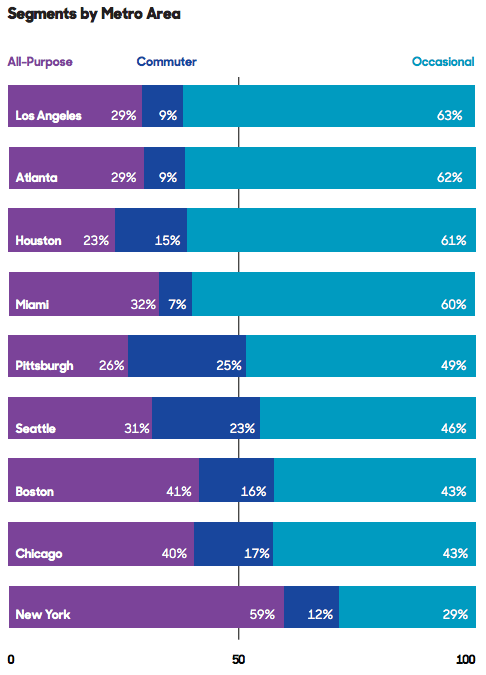
All-purpose riders are more prevalent where it’s easy to walk to transit, and where transit is frequent and provides access to many destinations. Transit agencies should strive to increase their number, as they are the most reliable and financially efficient customers to serve.
Transit agencies can take no one for granted
For decades, transportation professionals have talked about two kinds of transit riders: car-owning “choice riders” who use transit when it meets their needs, and carless “captive riders” who will use transit regardless of its quality.
Who’s On Board finds that the “captivity” of carless riders is severely overstated. People who live and work near better transit ride transit more often, whether or not they own cars. When transit becomes functionally useless, there are very few people who will continue to use it—a fact made plain by the nationwide decline in bus ridership in cities that cut service during the Great Recession.
Transit that doesn’t follow these simple rules–like commuter rail with parking lots at every station or slow streetcars that don’t connect to other transit–tends to perform poorly. Frequent transit networks in walkable neighborhoods, on the other hand, reduce reliance on cars, spark economic growth, and create the vibrant urban places we know and love.
To speak with TransitCenter about the report findings, contact Steven Higashide at 646.435.0658
How San Diego Leads the Charge To Protect Our Earth
As we celebrate Earth Day, and with more than 130 countries gathering today at the United Nations headquarters to sign a landmark global climate agreement, we also take stock of how our region plays a key role in protecting the planet for today and future generations.
Last December, on the heels of the historic international agreement in Paris, the City of San Diego passed a bold and ambitious Climate Action Plan, which has a five part framework:
1. Energy and Water Efficient Buildings
2. Clean and Renewable Energy
3. Bicycling, Walking, Transit and Land Use
4. Zero Waste
5. Climate Resiliency
By working together with many civic, business, nonprofit and government partners, San Diego has become America’s largest municipality to commit itself to reach 100% clean energy and cut polluting emissions in half.
This Earth Day, San Diegans can be proud of these efforts to lead the charge globally.
In fact, to date all cities in our region have completed greenhouse gas emissions, and two-thirds are working on or have adopted a climate action plan. Many cities and public agencies from Oceanside to Imperial Beach are working with the San Diego Regional Climate Collaborative to prepare for local impacts of climate change including increased coastal flooding and an increasingly water-constrained future.
An exciting number of civic organizations and nonprofits – from American Lung Association, Circulate San Diego, Environmental Health Coalition, Climate Action Campaign, Stay Cool and Surfrider Foundation — are working together with communities to help our region pick up the pace of action and meet this challenge today.
ROLE OF PHILANTHROPY
Since 2007, The San Diego Foundation has worked through our Climate Initiative with nonprofits, governments, business and donors to help catalyze more comprehensive regional action and leadership.
For example, in 2015, we granted $311,500 in climate resilience grants addressing a range of issues including coastal flooding, fire safety, water reuse and energy efficiency programs.
We have partnered with organizations such as ICLEI -Local Governments for Sustainability and the Energy Policy Initiatives Center to provide climate action planning technical assistance to all 19 local governments in the region.
Through our Blasker-Rose-Miah Fund, we are currently seeking grant applicationsfor work by early-career scientists to better understand the regional and local impacts of climate change to help communities region-wide address this shared challenge.
We’ve worked with Climate Education Partners to conduct public opinion research on views of regional residents about climate change, and share our region’s world-renowned climate science as summarized in San Diego, 2050 is Calling. How Will We Answer?with leaders and communities.
PLAY YOUR PART
As leaders from around the world are signing on to climate action, we all can play a part in making these plans a reality.
The San Diego Foundation is proud to continue working together with our community to maintain our quality of life today and for future generations.
Renewable Returns: And the Prize Goes to…
How a small incentive showed it can pay big to invest in renewable energy.
In the summer of 2014, I read that George Washington University, American University, and The George Washington University Hospital were going to buy 52 megawatts of power every year from a North Carolina solar farm. At the time, it was the largest non-utility solar power purchase in the U.S. and the largest solar project east of the Mississippi River. The icing on the cake was that they were getting fixed pricing for solar energy for 20 years at a lower price point than the current market.
In Boston, since we have so many colleges, hospitals, and large institutions—all major energy users—I thought, “Could we do something similar here?” The Boston Green Ribbon Commission (GRC) also considered this question and last year organized an informal network of Boston institutions to talk about how they could do large-scale renewables procurement. There was a lot of interest in joint purchasing to reduce costs and make it easier, but uncertainty about how it might work. To continue the momentum and to inspire action, the GRC issued a prize and Barr partnered with the GRC to fund it.
The $100,000 Renewable Energy Leadership Prize launched last summer. Its goal was to spur local leaders who were contemplating big renewable energy purchases to move ahead with their projects.
On February 25, the GRC announced the winner: PowerOptions, in partnership with Tufts University and Endicott College. The largest energy-buying consortium in Massachusetts, PowerOptions procures electricity and natural gas supply for 500 nonprofit and public members. The nonprofit organization teamed up with two of its members, Tufts University and Endicott College, to purchase up to 12 megawatts of power from a wind project in New England.
Other applications came from Boston University and by A Better City (ABC), a consortium of Boston institutions and civic leaders. All three applicants went through twists and turns to pursue a deal and, as of this writing, their pursuits are still ongoing. Some customers participating in the deals withdrew because developers changed their terms. Some deals fell apart or were delayed as market and policy conditions changed. Most notably, Endicott College is no longer part of the PowerOptions deal because the developer wanted them to purchase a larger amount of power. They were replaced by Partners HealthCare, the parent organization of Massachusetts General Hospital and other major healthcare facilities.
At this point, it appears that the Prize is yielding two sets of results. First, it spurred the three applicants to devote considerable time and effort to solving the puzzle of buying offsite renewable electricity. Our initial hope and hypothesis was that a prize would catalyze action, and that turned out to be right. There was a risk that there would be no takers and we were pleasantly surprised to see such significant interest. The applicants were in different stages of readiness and had different factors motivating their actions. The Prize helped push them to their finish lines by creating deadlines for accomplishing what some had been planning to do for some time. If all three deals go ahead as currently planned, it could result in as much as 63 megawatts of new renewable energy capacity.
The second result is learning: by the applicants and their developers, consultants, and brokers; by the GRC and their stakeholders; and by the Barr Foundation. To share the lessons learned from the Prize, the GRC recently released a case study, called Solving the Puzzle.
Here are four of the key takeaways:
1. Collaboration takes time, but multiplies returns.
The Prize placed a high premium on collaborative proposals, with the theory that joint procurement would be better. While this created a barrier to wider participation, it also tested the theory that institutions could collaborate to negotiate stronger green power purchases. While results suggest that more time is needed to structure such deals, it also showed that collaboration did in fact create better deals. I hope the participants’ experiences of crafting and negotiating these deals provides them with jumping-off points to continue their efforts and to inspire others.
2. Unexpected terms may make the deal work for you.
All three applicants considered or deployed some complicated features in their deals, including forms of arbitrage for both electricity and renewable energy credits, as well as inter-regional power deals. The complexity was worthwhile because of the significant financial benefits it captured. There were huge price variations between technologies and regions that enabled significant cost savings.
3. Policies can move or delay an energy deal.
State, regional, and federal policies had major implications for the nature of the deals. Strong energy policies drive progress in clean energy, but they are difficult to navigate and can be slowed down by legislative inaction. State solar regulations and federal tax credits were both up in the air at the time of the contest, causing a number of delays and potential dead-ends. The applications, and the response from potential suppliers, were affected by this uncertainty.
4. A commitment to sustainability really matters.
While all applicants were looking for the most cost competitive deals, their degrees of commitment to sustainability and clean energy played decisive roles in motivating their actions. Those with long-term carbon-reduction goals embedded across their organizational decision-making processes looked at their options in a different light than institutions without such goals.
I would strongly encourage other funders to consider launching a similar initiative. The Prize was particularly useful here in Boston, where higher education, healthcare, and private companies have the potential to directly purchase renewable energy. The Prize motivated them to commit to such purchases. I expect many other places are in similar situations.
There is still work to be done to expand interest in renewable energy purchases and to make it easier for institutions to participate. But, the Prize offered a major learning opportunity for the Barr Foundation and for the GRC in what it takes for institutions and companies to engage in renewable energy purchases.
Depicted in the photo above are applicants of the $100,000 GRC Renewable Energy Leadership Prize along with Barr and GRC staff.
Announcing $1.4 million in support for cities and sustainability through Partners for Places
How many partnerships does it take to create healthy and sustainable communities for all? Tons. The opportunities are endless and the needs urgent. Just think about the challenges before us: rapidly accelerating climate change, unsafe drinking water, neighborhood flooding made worse with more intense storm events, western drought and wildfires, uneven access to safe and healthy local food, and the list goes on. That is why the Funders’ Network and Urban Sustainability Directors Network (USDN) have joined forces to provide financial and technical resources to communities across the United States and Canada through two grant programs: the Partners for Places general grant program and the Partners for Places Equity Pilot Initiative.
Today, we’re excited to share that 12 grantees will receive a combined $1.4 million to advance their work through Partners for Places.
The work began five years ago, when the Funders’ Network and several member foundations were excited by a new field in the making – urban sustainability – and the power of peer networks and partnerships to accelerate learning and best practices. We put our heads together with colleagues at USDN to create a matching grant program that improves U.S. and Canadian communities by building partnerships between local government sustainability leaders and place-based foundations. The national funders would invest in local projects developed through these partnerships to promote a healthy environment, a strong economy, and well-being for all residents. At the same time, through these investments, the Partners for Places general grant program would foster long-term relationships between cities and funders to help make communities more prosperous, livable and vibrant.
Fast forward to today, and we’re well on our way toward achieving our goals. As of now, Partners for Places’ general grant program has awarded nearly $3.5 million in grants to support 63 projects across the U.S. and Canada, with these dollars matched 1:1 by local, place-based funders. That’s close to $7 million invested in a wide range of terrific sustainability and climate action partnership projects, which have engaged 95 local funders in this work.
Partners for Places has provided a reason for place-based funders and city sustainability leaders to start to talk to each other, and for many of them to work together to improve the livability and quality of life in cities across the country. These projects are making a difference in people’s lives, especially those in greatest need.
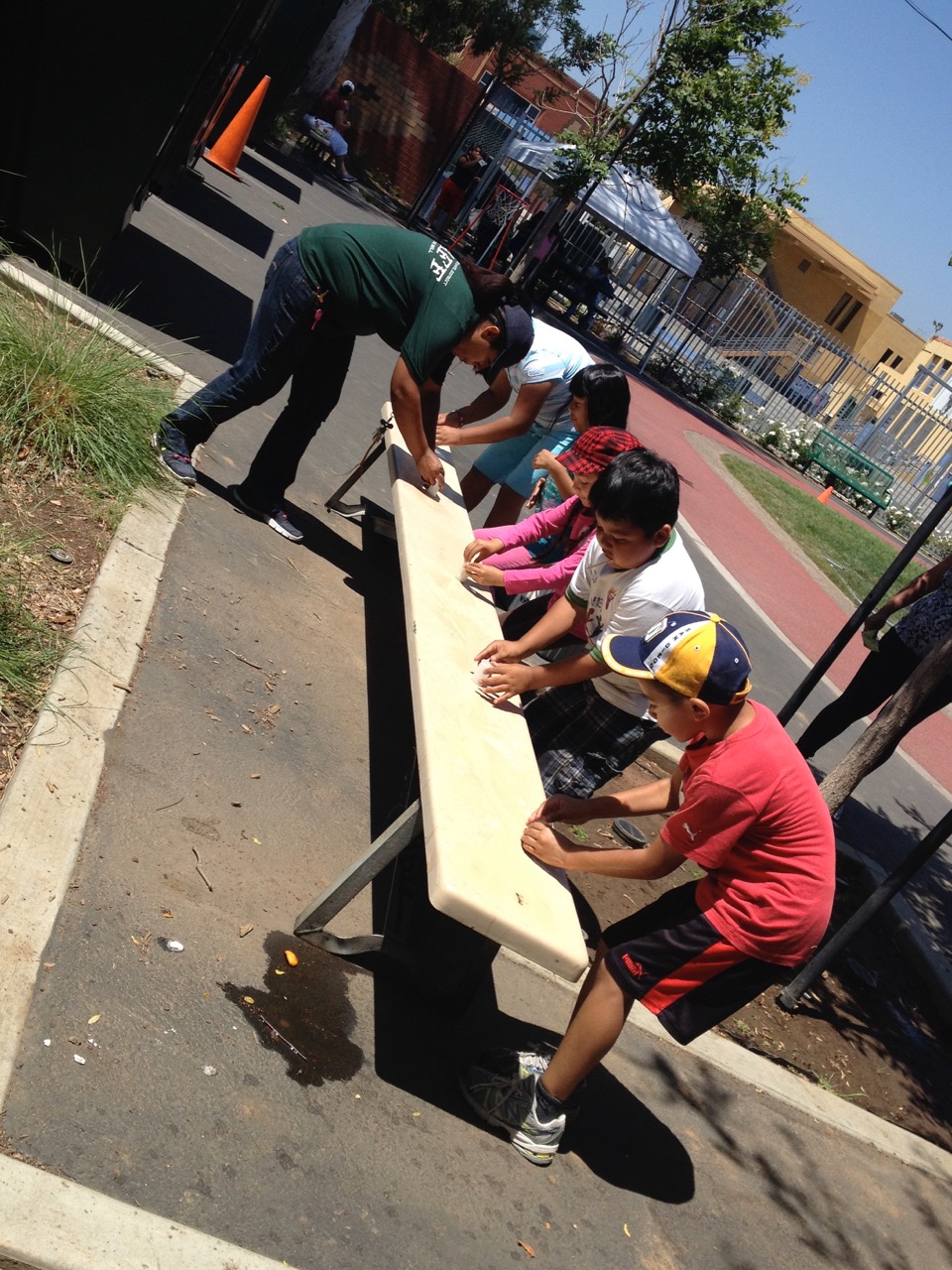
Click Here to meet the MU students are #inittowinit for the #CoMoEnergyChallenge
In Philadelphia, our grant provided staffing for the city’s new Food Policy Council, a broad group of stakeholders working across the city to create urban farms on vacant lots and increase neighborhood access to healthy local food. In Columbia, Missouri, the CoMO Energy Challenge is starting to significantly reduce energy consumption in every household and municipality-owned building in the city. At the end of the grant period, overall residential electric use was down 11.4 percent, residential gas use down 12.4 percent, and gas use in city buildings down nearly 15 percent. Fully, 85% of these Partners for Places partnerships are continuing on beyond the life of our grant.
In our latest grant round, the selection committee approved eight grants totaling $437,108 to support projects working to promote urban agriculture, advance green stormwater solutions, provide open space to disadvantaged communities and green jobs for low-income workers. These sustainability efforts will take place in cities big and small, and largely focus on low-income communities. They include a Boston project training young adults involved in the court system to work on urban farming and a Milwaukee effort to create a welcoming green space for neighborhood residents on the city’s long-industrial waterfront.
Six investor funders support the Partners for Places general grant program: Bloomberg Philanthropies, The JPB Foundation, The Kendeda Fund, The New York Community Trust, Summit Foundation, and Surdna Foundation.
Our spring 2016 general grant program recipients are the cities of:
• Atlanta, Ga. ($75,000): to create green jobs for unskilled workers through a training program that employs residents from one of the city’s oldest neighborhoods on an urban, aeroponic farm. (Partner: The Community Foundation for Greater Atlanta)
• Berkeley, Calif., ($35,000): To bridge the solar divide and ensure that all Berkeley residents have access to renewable energy sources by providing solar installations for low-income communities, including multifamily affordable housing developments, and offering free hands-on solar job training. (Partner: The San Francisco Foundation, and The East Bay Community Foundation)
• Boston, Mass. ($50,000): to provide green job training in urban farming to young returning citizens and offering healthy, fresh produce to residents in underserved neighborhoods. (Partner: The Boston Foundation)
• Bridgeport, Conn., ($45,138): to engage residents in developing a plan to create more tree canopy, open spaces and stormwater solutions that will reduce flooding in a low-income area of this city. (Partner: The Emily Hall Tremaine Foundation )
• Burlington, Vt., ($30,000): to improve the water quality in Lake Champlain by developing pilot stormwater management projects on public schoolyards. (Partner: The Linthilhac Foundation)
• Ithaca, N.Y. ($51,970): to make Ithaca more energy efficient by evaluating the policy tools the city can use to incentivize or mandate green building standards for new construction. (Partner: The Park Foundation)
• Los Angeles, Calif. ($75,000): to provide more open space in underserved communities in Los Angeles—a city where only 33 percent of children are within walking distance of a park—by transforming nine schoolyards into parks for use during non-school hours. (Partner: The Goldhirsh Foundation)
• Milwaukee, Wis. ($75,000): to bring the public back to the long-industrial waterfront through community outreach and a greening of the city’s long-industrial Harbor District. (Partner: The Brico Fund, and The Fund for Lake Michigan)

Sustainability planning in Baltimore
Today, we are also announcing the four grant recipients in the Partners for Places Equity Pilot Initiative. This two-year pilot was created to provide financial and technical support to a cohort of cities and their place-based foundation partners, as a way to help local efforts use an equity lens in advancing sustainability and/or climate action. They are also learning together, and sharing their insights with each other to advance their work. Why is this important? Communities of color and low income neighborhoods are disproportionately harmed by the effects of climate change and environmental hazards, yet typically lack the political clout to ensure their needs are adequately addressed. That’s why it’s essential that decision-makers are equipped with the resources and tools to protect the health and well-being of their most vulnerable residents. The Equity Pilot Initiative is made possible with generous support from the Kendeda Fund and the Kresge Foundation.
The recipients are:
• City of Baltimore, Md. ($35,000): To ensure social equity is a key consideration and lens in updating and implementing the city of Baltimore’s sustainability plan, in addition to becoming a model that can be replicated and used across departments. (Partner: Baltimore Community Foundation)
• Knoxville, Tenn. ($74,000): Working with the Change Center Jobs Initiative and the City of Knoxville Save Our Sons Initiative to strengthen career pathways for young adults of color by expanding employment and job-training opportunities, mentoring students and entrepreneurs, promoting diversity and inclusion in the private sector and building the capacity of local government to address equity through a wide variety of projects. (Partner: Anonymous)
• Las Cruces, N.M. ($51,981): To launch a community engagement project in eight underserved neighborhoods that gathers neighborhood-level data and stories, and then brings residents together with city staff to address institutional barriers to equity in community development, climate preparedness, and emergency planning. (Partner: Community Foundation of Southern New Mexico: Doña Ana Communities United initiative)
• Providence, R.I. ($50,000): To better understand the needs of the city’s most vulnerable, address them in an updated sustainability plan and make equity a fundamental part of Providence’s Office of Sustainability’s work. (Partner: Rhode Island Foundation)
As a member of the grant selection committee, I want to extend our congratulations to all of our Partners for Places grantees from these spring rounds. We look forward to hearing more about how the partnerships and the projects develop over the next year, how they are shared, and how they can inspire other cities to step outside their comfort zones to work with diverse sectors of the community. I’ve learned a lot by just sitting on the selection committee with funders and city sustainability leaders, and I’ll learn a lot more watching how the projects unfold over time.
In the meantime, the Partners for Places General Grant Program will open a ninth round of funding with a Request for Proposals to be released in early June 2016. Today, we are hosting an informational webinar for funders and public sector leaders to alert funders to this upcoming matching grant opportunity, and to give a taste of some of the terrific partnerships and projects that have been launched with help from this program. You can register here. Be on the lookout for the application too be released early next month.

